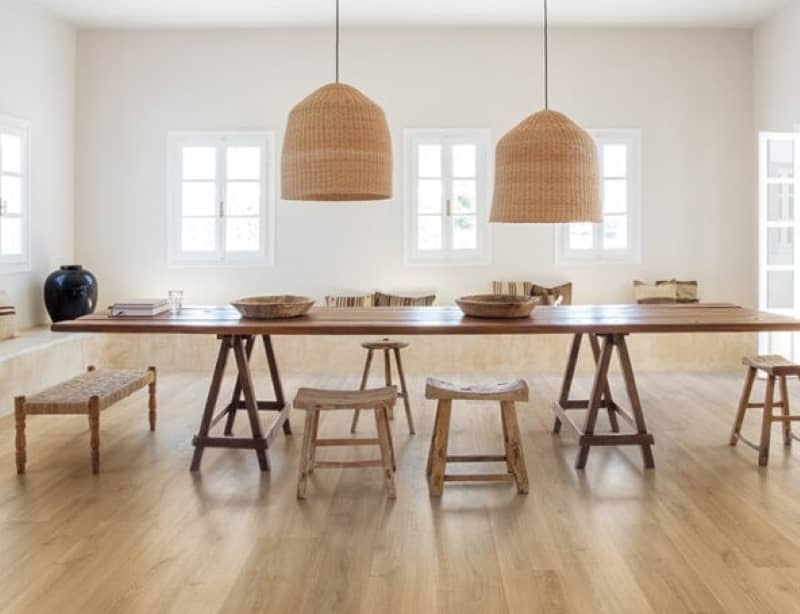Before Laminate Flooring entered the Australian market, it was mainly used in Europe and is believed to have been invented in the late 1970s in Sweden. It’s quite surprising that something as prevalent as laminate only came into Australian homes and businesses around 20 years ago. Today, it’s considered a mature product category that has undergone many years of development. This blog covers the history of laminate flooring including anatomy changes, popularity, problems and resolutions.
History
The first modern laminate flooring was introduced in 1984. The product was primarily used in kitchen counters but later moved to floor surfaces. Originally, laminate flooring was designed for apartment dwellers because of how easily and quickly it can be installed. It could be just as easily disassembled, and this was a trend in European Apartments, where people took their floor with them when they moved!
Many will agree that it is more of a DIY product, especially when compared to other flooring products. With sheet vinyl, for example, DIY installations are not recommended and generally avoided. One mistake is all it takes to ruin the whole sheet – but that is not the case with laminate.
For a time, laminate floors were glued together using a Tongue and Groove joining system. Later, with the development of the Uni-Click locking system and the many that followed, glue was no longer required for the installation. The floor could now be ‘Locked’ together with a truly glueless installation.
Following its introduction into the European market, laminate flooring shortly became the most significant flooring invention since cushioned vinyl, which has been in use since the 1960s. Homeowners loved laminate because it gave them floors that looked like hardwood – without the cost. Unlike sheeted products which have predictable pattern repeats, laminate planks could be moved around to reduce the predictability of repeating patterns. Having said this, at that time laminate floors were not particularly realistic, and tended to have a ‘plastic’ appearance.
But with the rapid popularity of laminate, more options began to emerge. Laminate flooring began to better resemble wood and the other materials it mimicked. This is why it can now be hard to tell authentic hardwood from high-quality laminate floors. Laminate flooring in many cases has become so realistic that even flooring aficionados can get fooled by them from time to time.
Laminate planks have evolved into two sub-categories: traditional and water-resistant. Both categories are relatively inexpensive, though the Water Resistant options tend to cost a little more. With laminate flooring, you can get massive planks without breaking the bank, the size of which is simply not available in other flooring options.
What is Laminate Flooring?
Laminate floorboards are made from many layers, which are bonded together in a machine known as a ‘Hot Press’. Let’s start from the bottom-most layer and work our way up:
- The bottom layer is made of a polymer like melamine or resin impregnated paper. This layer gives the flooring additional strength and resistance against moisture ingress. This helps to prevent damage to the product from water and rising damp coming from the slab beneath.
- The core or substrate layer is made from an HDF particleboard that consists of wood pulp pressed with waxes and resins. This is possibly the most important layer of the product, as what goes above needs a solid base. HDF is resistant to humidity, helping to prevent warping, which can be an issue with timber and other floor surfaces.
- The Picture film or ‘Decor’ is the next layer. This is what gives laminate its colour and is a picture of what the laminate seeks to replicate. It is normally resin-infused and uses multi-colour printing technologies to create a stylish look for the product.
- Finally, we have the wear layer, which is a tough sheet of melamine that guarantees the durability of the product. This layer contains aluminium oxide and similar hard protective substances that can also fight the effects of ultraviolet rays. This is partly why laminate flooring has greater fade resistance than other products. This wear layer is what makes laminate the most scratch, stain and burn resistant flooring product available.
An underlay must also be used with Laminate Flooring. Although it is not an actual part of laminate floorboards, it serves as a barrier between the subfloor and laminate flooring. The purpose of using underlayment is to provide a soft ‘disconnect’ between the floor and subfloor, creating acoustic attenuation. At the same time, it also helps with thermal insulation and usually contains a moisture barrier.
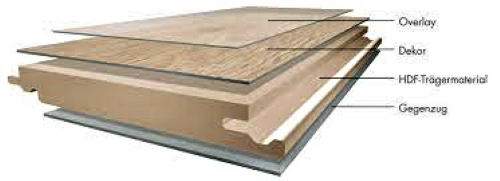
Initial Success in the Australian Market
Around two decades ago, after entering the Australian market, laminate became the top alternative to vinyl and ceramic tile flooring. One reason for its success was because it was a real DIY flooring option. With a little bit of care, an average person could install laminate, which was a breakthrough in the industry. Tiles required a great deal of skill to cut properly and needed to be glued. Sheet Vinyl could be ruined with a single bad cut. Laminate though installed with a locking system that made installation relatively simple.
This ease of installation took laminate into the big time. In many cases, it replaced ceramics as a ‘main floor’ option for builders and developers. As well as being easy to install, it was far easier to pull up. This meant that if a homeowner wanted to change the floor, it was a very simple matter. There was no longer the need for jack-hammers and grinders. You simply had to unclick the floor, and a whole house could be done within a couple of hours.
Laminate also provided certain visual benefits over Ceramic tiles and Sheet Vinyl that were used as Main Floor products at the time. Ceramic tiles quite often had the same print on each tile, making tiles that were replicating natural products look very repetitive across the floor.
Additionally, Sheet Vinyl used a pattern that would repeat every metre both on the length and width. While Laminate was limited in the number of patterns available, (usually between four and ten unique prints,) these could be arranged as you chose across the floor. By staggering the boards as they were installed, and randomizing the different pattern placements, the patterns on the floor looked more ‘natural.
For a time, Laminate was the hot flooring product. Importers brought the product in first from Europe, and later from China. More and more, distributors and retailers who at first were hesitant jumped onto the bandwagon.
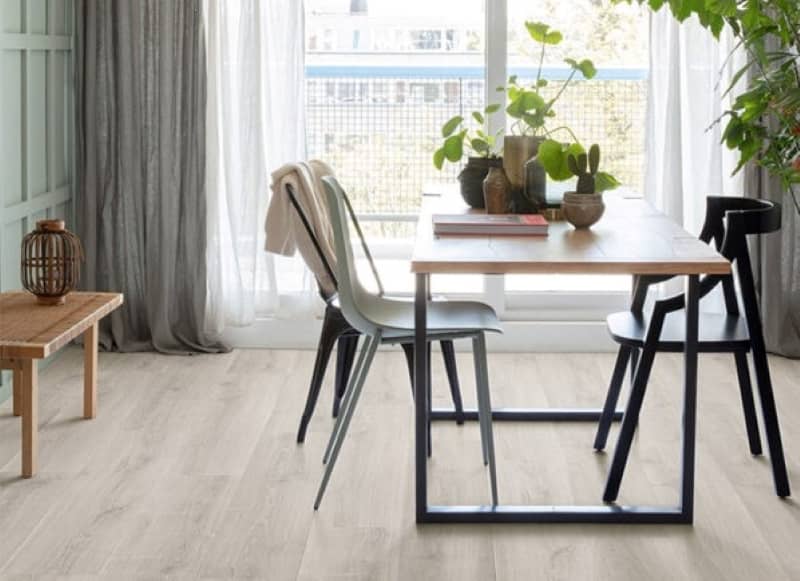
Then the Problems Started
But chinks started to appear in the armour, and the love affair with Laminate was soon about to end. For all of the benefits of laminate flooring and the lack of a value alternative, several things happened that were to slow the train.
When Laminate first came into the Australian market, it was made in Europe in a competitive market by companies that truly understood the laminate category, and had many trade secrets to give their product a competitive advantage. Laminate soon started to be made in China, which while looking very similar to the European product, was inferior in every way. While Chinese laminate has come along in leaps and bounds, in these early days, it lagged behind European Laminate in every way but price.
This on it’s own however was not ‘the’ reason for the fall of laminate.
The original underlays used for Laminate Flooring were an underlay only. To prevent rising damp entering the floor from behind and penetrating the vulnerable joins, a builders plastic was laid between the floor and the Underlay, with the joins taped together. This prevented damage to the product from the rear. Soon though, companies started to build the moisture barrier into the underlay. This helped the installer by simplifying the installation.
It was a great idea… sort of.
The reason for this was that the Builders plastic that was used originally was 200 micron (.2mm) in thickness and was waterproof. The moisture barrier that was put onto the back of the underlay was only 70 micron (.07mm) in thickness, and while water-resistant, was not waterproof. Again this on its own, or even combined with the advent of cheaper quality laminate flooring was not ‘the’ reason for the fall of the category.
The nail in the coffin was these 2 factors combined with Laminate being laid over the top of new built concrete slabs. A new concrete slab will release moisture for up to 10 years. With a membrane that was not waterproof and a cheaper product that more easily absorbed moisture, the stage had been set for the perfect storm. While Laminate was the single most scratch, stain and burn resistant flooring product (and still is,) the weakness of the core in cheap laminate had been exposed.
Being an unregulated industry, many flooring salespeople have little experience, and very few companies train new people. Salespeople under constant pressure in a highly competitive industry to achieve high sales targets typically sold laminate flooring on price and not on quality. Additionally, when given the choice between price and quality, all too often consumers chose price, getting what they wanted, but not wanting what they got.
Enter LVT
LVT or Luxury Vinyl Tile/Plank. This promised an easy, loose lay, glueless installation that could be done with a knife. But best of all, it was waterproof. This new kid needed a villain, and this became laminate, because at this time companies that sold vinyl typically did not sell laminate, so they attacked laminate with guns blazing. While much of the original sales pitch for LVT was at best flawed, it was waterproof, and most of the mud hurled at poor old laminate stuck.
Laminate started to take up less space in flooring showrooms, and many of the younger salespeople coming into the industry knew nothing about the product. Often their knowledge of Laminate was limited to ‘If a cup of water is spilled on it, the whole floor is ruined’, and they knew little if anything about laminate, and the industry became full of Vinyl Plank salespeople.
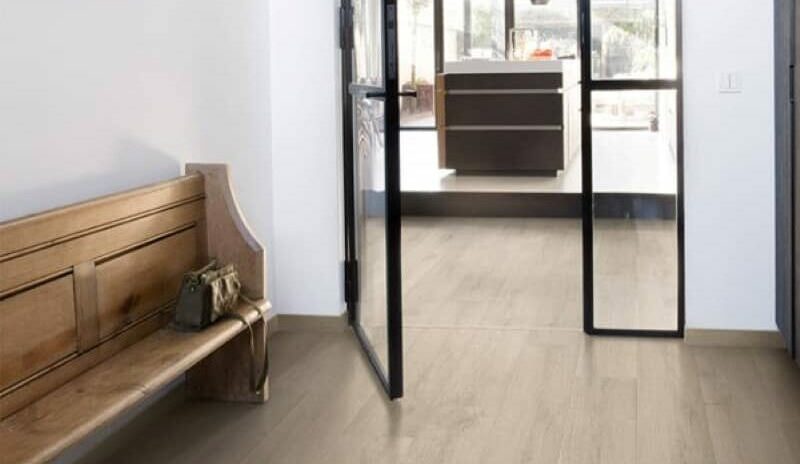
The Resurgence of Laminate in the Market
While Laminate Flooring had been sitting in the sin bin, it had not been idle. Many breakthroughs had been made that had solved earlier issues that the category faced. But there was still that ever-present sticky mud that had tarnished its reputation.
Vinyl Plank was to go on and have its day in the sun, and it was prolific. But it had many issues of its own, and the issue of ‘cheaper product’ came to light more quickly than it had with Laminate. More recently Hybrid Flooring entered the market and has proven to be a great all-rounder. Importantly though, Hybrid Flooring has put people back into the mindset of the ‘Floating Floor’ and has set the stage for the resurgence of Laminate Flooring.
In recent times, products like Impressive Ultra and Majestic Laminate Flooring have offered water guarantees, while giving back the scratch, stain and burn resistance that only laminate can offer. Additionally, Chinese laminate has come along in leaps and bounds. While it lacks in some of the finishing technologies of its European counterparts, Chinese Water Resistant laminates offer far better water warranties than their European Counterparts. Most European warranties are ‘Surface Only’, where many of the Chinese products offer a warranty even if the product is ‘fully submerged’.
Laminate also offers Embossed in Register finishes that are many times more realistic than those that are used in Vinyl Planks, and for the most part, Hybrid Flooring. Laminate boards are generally also longer, with boards up to 2.28 metres in length. Hybrid tops out at 1.8 metres, with the average being 1.5m, and Vinyl is mostly 1.2m long.
These new Water Resistant Laminate Floors in many cases take away the need for expansion joints in the floor in most cases. Signature’s ‘Aqua-plank’ Laminate was the first of these made in China Laminates in the Australian market and offers the consumer a raft of twenty metres by twenty metres before an expansion break is required in the floor. This means that in most houses, these unsightly breaks are not required. More recently, the Prime Legend Collection Laminate offers a whopping thirty-two metres in any direction before an expansion break is required in the floor. This is a first for the industry!
All of this means that while Laminate Flooring can never be called ‘Water-Proof’ Water Resistant Laminate is as good as. Additionally, manufacturers are now offering underlays with waterproof backings to give that added level of protection that was not there before. You now have a floor that can be truly lived on, with little or no fear of damage!
As you can see, in its downtime, Laminate development was not idle. Vinyl plank has had its day in the sun, and the development of the category has largely stalled, as there is little place for it to go. Hybrid has been a good placeholder and done a terrific job. However, it has not been without its problems but has done a pretty decent job of filling the space.
However, with massive planks Embossed in Register planks, they are more scratch, stain and burn resistant than any other flooring in any other time in history. Direct Printing technology is also on our doorstep which will make Laminate Flooring far more realistic looking and even better than the real thing! With all of this on a floor that can be truly ‘Lived’ on, Laminate Flooring is poised to once again take pole position in the flooring industry.
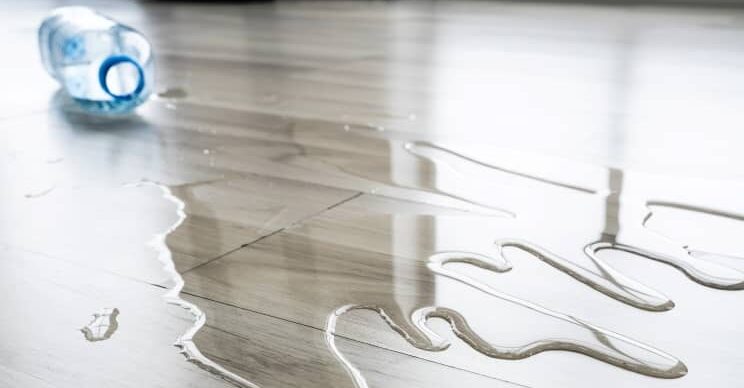
Pros and Cons of Laminate
Laminate floors have plenty of attractive benefits. Laminate has been used in Australian homes, particularly in kitchens, for counters to backsplashes for many years. Its natural durability and toughness were to naturally lead to its use on your floor: the highest wear area in any house!
Here’s why laminate is an excellent flooring solution for homes and businesses:
Scratch Resistance
There’s a reason why laminate is the preferred flooring option of many pet owners. Laminate shows its durability by resisting scratches, often caused by the sharp nails of your furry friends. Even if your pet tries to scratch the surface now and then, you don’t have to worry about the condition and appearance of your floors.
Because laminate flooring is highly scratch-resistant, it can handle almost any furniture you have. This means if you move your furniture regularly, rarely do you have to worry about dragging your couch across the floor!
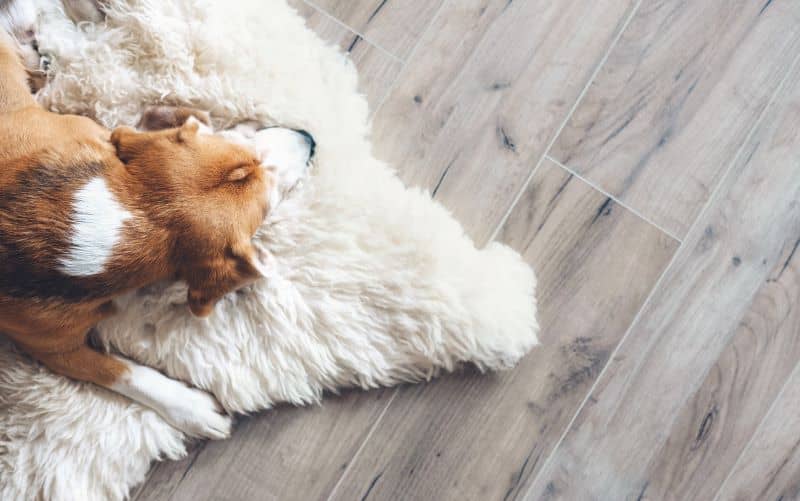
Stain Resistance
Laminate is hard to surpass when it comes to resisting stains. It’s one of the biggest reasons why it was mostly utilised as a material for kitchen counters.
Laminate floors are great for households with kids, especially because they can constantly spill anything from sodas to juices to snacks. Beetroot Juice, Hair Dye, Iodine, coffee; it doesn’t matter. With laminate floors, you only have to clean the stain using a damp cloth. Then, wipe with a dry cloth. It is that simple. Furthermore, if you don’t see the stain for 24 hours, just add a little bit of elbow grease and you can almost always remove the stain.
Burn Resistance
Laminate is also the most burn resistant flooring product on the market. Even if burning embers fall onto the floor, or someone puts out a cigarette on it, you can rest assured that the surface will not be burnt or discoloured.
EIR Surface
Embossed in Register is a manufacturing process used for many laminate floors that gives the floor a more realistic look, by aligning the texture in the top wear layer with the printed picture beneath it. EIR allows the laminate to have that authentic look of real timber, without the plastic look. With this technology, laminate planks look more authentic today than other non-real flooring categories, and will usually fool all but the most experienced observer.
HD Photographic Image
The better the laminate, the better the image. High-end laminates use many colours in their prints than the standard four that are used in lower-end products. This gives sharper picture quality resulting in greater realism in the look of the floor.
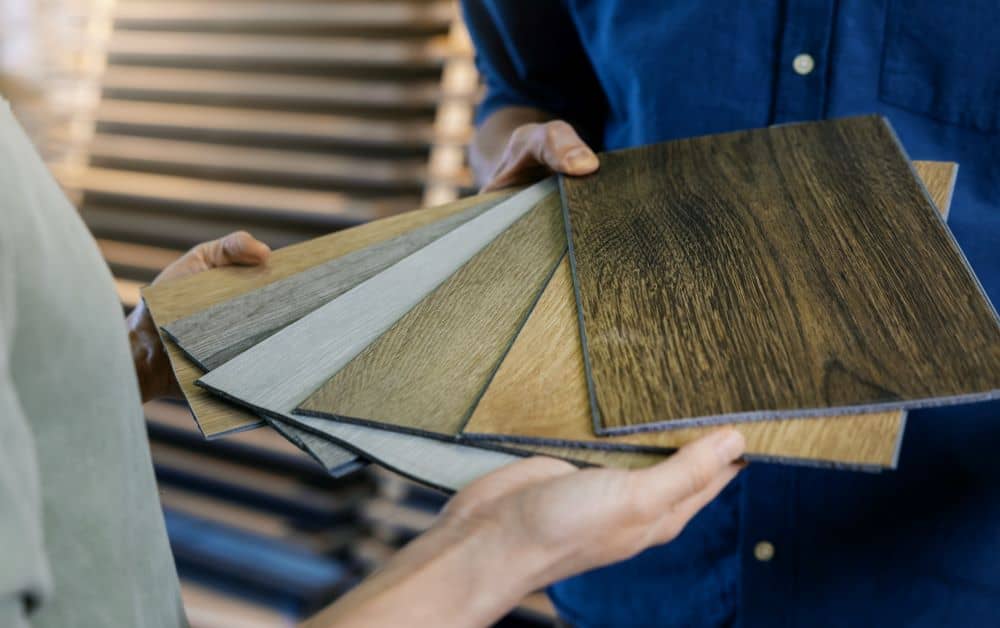
Bigger Planks
Compared to other products, you cannot find planks as big as laminate. You probably never thought that you needed big planks, but once you have seen them, it is very hard to go back! When you have more expansive flooring, the space feels bigger.
Easy to Clean and Maintain
In general, laminate floors only require sweeping. For water-resistant laminate floors, wet mopping and occasional steam mopping (check with the product manufacturer,) clean even the most stubborn of stains. Some variants of laminate offer anti-microbial benefits, which are added to the resins used in the product’s manufacture. Therefore, you have clean floors that also repel microbes.
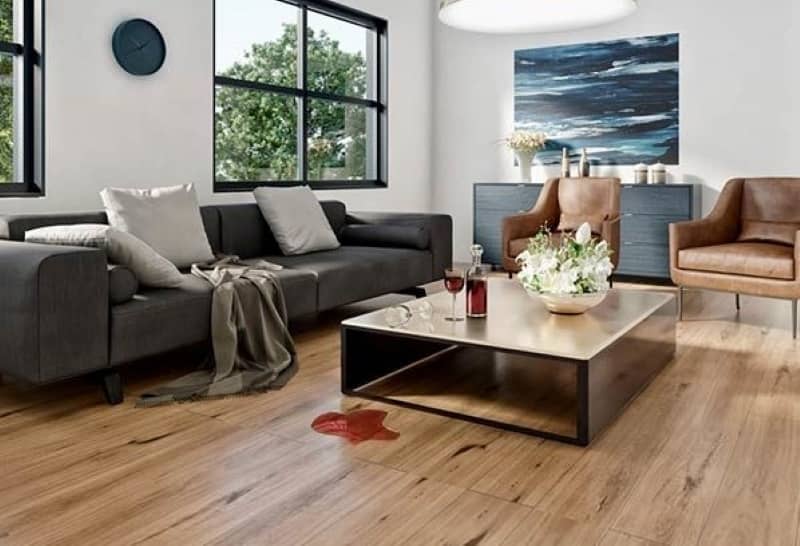
DIY Option
The simplicity of laminate is one of its best features. It is easy to install because of the design, which allows the planks to click together. You can install the planks on your own by simply following the manufacturer’s guidelines. Once you get the hang of using these interlocking boards, you can quickly finish the job without the help of a professional.
With all these benefits, you’re probably wondering, “What’s the catch?” Laminate, just like any other flooring material, is not perfect.
It does have its cons, which include:
Harder Installation than Hybrid or LVT
Laminate flooring is a DIY option but does require an array of tools if you want to install it correctly. Where LVT and Hybrid installation can be done mostly with a sharp knife, Laminate Flooring requires the use of power saws which make a mess. This means every plank you need cut requires you to get up and go to where your saws are set up. Hybrid and LVT on the other hand, can mostly be cut planks where you are working.
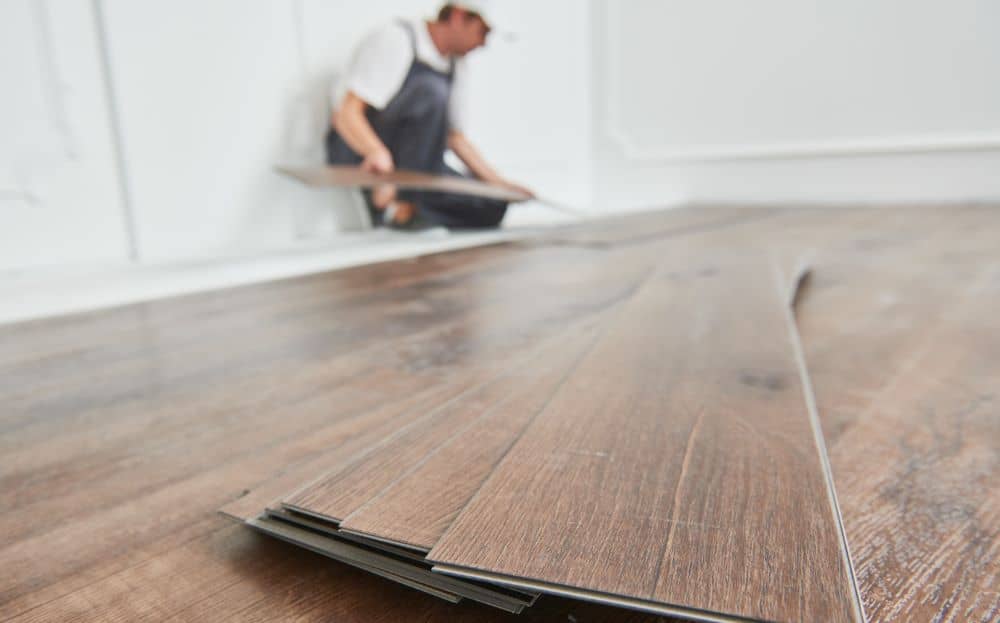
May Need Scotia
Laminate Flooring requires perimeter expansion breaks, and these must be concealed by either removing and replacing your skirting boards, or by adding scotia to the skirting board if you do not remove it before installing the floor. Scotia is an easy sign that the floor is not the real deal, and is very difficult to get just right.
Internal Expansion Breaks for Traditional Laminate
Although laminate has evolved dramatically, traditional laminate still needs internal expansion breaks in larger areas. Better quality Water Resistant Laminates often remove the need for these internal breaks.
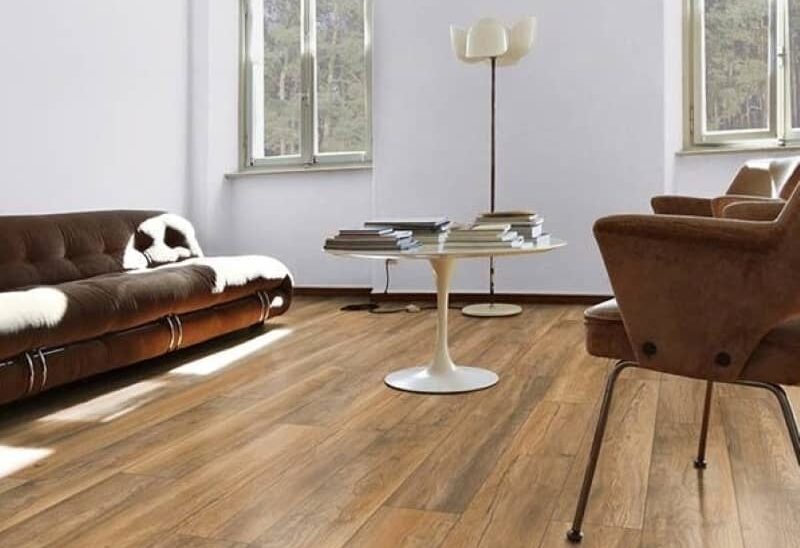
Water or Water Vapour Vulnerability for Traditional Laminate
Water-resistant laminate can withstand water and water vapour. Still, part of looking after your floor is to ensure you don’t leave water on the surface for a long time. But if you have a traditional laminate, water damage is something you will need to watch out for. Laminate and water, (especially water vapour,) do not mix.
If you are considering laminate, it helps to see how it all began and how the product has developed as a category over the years. Today, the laminate flooring market is still beset by cheap, poor-quality products, but on the whole, the product category has improved vastly from where it started.
Additionally, with the advent of Water Resistant Laminate and Digital printing technology about to land on our doorstep, Laminate is set to surge again. If you are interested in Laminate Flooring but are unsure where to start, talk to our team at the Online Flooring Store for peace of mind.



